esp32 vs stm32: choose the better one
Introduction
The selection of microcontrollers plays a crucial role in project success in the dynamic field of embedded systems. In this field, ESP32 and STM32 are clearly strong competitors thanks to their distinct features and functionalities. This article compares the features, drawbacks, and application areas of ESP32 vs STM32 microcontrollers in great detail.
Table of content
What is esp32?
ESP32 is a WiFi chip launched by Espressif Information Technology. It features an up to 230MHz main frequency, a 40nm process, a dual-core 32-bit MCU, a 2.4GHz dual-mode Wi-Fi and Bluetooth chip, and a computational power of up to 600DMIPS. includes functions including dynamic voltage scaling, power-saving modes, and fine-resolution clock gating. It combines parts such as power amplifiers, low-noise amplifiers, filters, power management modules, antennas, and RF baluns. It has stable performance, is easy to manufacture, and has an operating temperature range from -40°C to 125°C. Supports multiple communication protocols, such as I2C. I2S. SPI. UART. CAN. Multiple adjustment and management modes: Active mode, Modem-sleep mode, Light-sleep mode, Deep-sleep mode, Hibernation mode. The required solutions can be adjusted according to different needs.
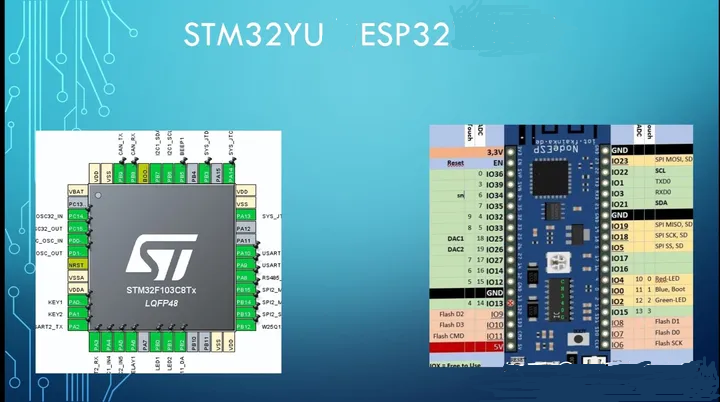 Figure1-esp32 vs stm32
Figure1-esp32 vs stm32
What is stm32?
STM32 is a microcontroller manufactured by STMicroelectronics. ST is the abbreviation of STMicroelectronics, M refers to the first English letter of microcontroller (that is, single-chip microcomputer) MCU, 32 refers to 32-bit CPU, and its CPU uses ARM's Cortex-M series Kernel design. STM32 covers various series of Cortex-M, including M0, M0+, M3, M7, etc. The STM32 series of microcontroller chips is divided into two sub-series. They are, respectively, the STM32F101 series with an operating frequency of 36MHZ and the STM32F103 series with an operating frequency of 72MHZ. The latter has more RAM and peripherals than the former. These two series of chips have good compatibility in terms of programs and have the same Flash, making program development and upgrades more convenient.
esp32 vs stm32: what is the difference?
ESP32 and STM32 are two different types of chips, and they differ in application scenarios, performance features, and functions. The specific differences are as follows:
Application scenarios: ESP32 is mainly used in the Internet of Things, smart homes, and other fields, while STM32 is widely used in industrial control, automotive electronics, medical equipment, and other fields.
Processor architecture: ESP32 uses a dual-core processor architecture, where one CPU is a high-performance processor and the other CPU is a low-power processor; while the STM32 uses a single-core or multi-core processor architecture.
Features: ESP32 integrates WiFi and Bluetooth functions and supports multiple power-saving modes; while STM32 does not have these functions. However, STM32 has more powerful computing power and richer peripheral interfaces (such as USB, CAN bus, Ethernet interface, etc.), which can meet more complex application requirements.
Development difficulty: Because ESP32 integrates WiFi and Bluetooth functions and provides a complete SDK and development toolchain, it is less difficult to develop than STM32.
Price: Generally, ESP32 is cheaper than STM32. But if you need to use some advanced models of ESP32 (such as models with LoRaWAN communication protocol), the price may be higher than some STM32 chips.
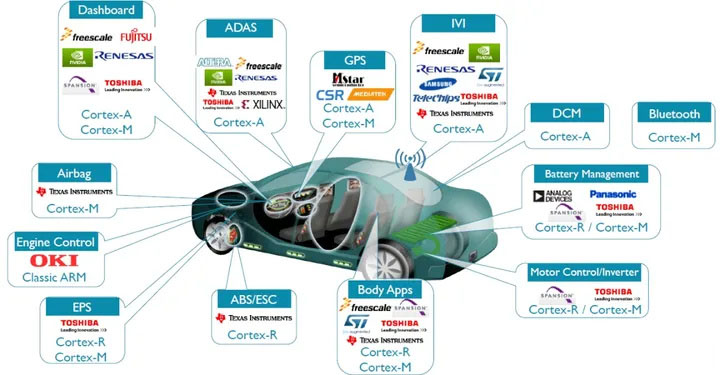
Figure2-Application scenarios
ESP32 vs STM32:Pros and Cons
|
Features |
ESP32 |
STM32 |
|
Advantages |
||
|
Applicable Fields |
Outstanding IoT performance and cost-effectiveness |
Outstanding output in industrial domains and elevated dependability |
|
Cost Advantage |
Reasonably priced overall development costs combined with strong performance |
Growing costs of pricing |
|
Arduino Environment Support |
less difficult to program, robust open-source community |
Slightly challenging to begin with, high learning curve |
|
Built-in Bluetooth and Wi-Fi |
Bluetooth and Wi-Fi integration lowers the cost of extra modules |
- |
|
Dual-core Processor |
Allows for real-time multi-threaded processing |
- |
|
High-speed Main Frequency |
Higher processing speed and computing power up to 240MHz |
- |
|
Pure Hardware Debugging |
very simple hardware debugging, which makes development easier |
Higher hardware debugging costs despite a simpler debugging toolchain |
|
Disadvantages |
||
|
Limited Number of Pins |
comparatively few pins, making it less appropriate for projects requiring a large number of IO ports |
|
|
Complex Debugging Tool Chain |
intricate toolchain that necessitates a thorough understanding of compilation procedures and command-line tools |
- |
|
Slow Compilation Process |
slower compilation speed than some other options |
Effective compilation, but costs are increasing |
|
Debugging Complexity |
somewhat difficult debugging and software breakpoint restrictions |
Simpler debugging toolchain, but more expensive hardware debugging |
|
|
|
Effective burning and compiling |
Can esp32 replace stm32? which one is better?
It may be a substitute for the student group due to higher cost performance. There is no substitute from a product perspective, and many factors must be considered when selecting a product. Both ESP32 and STM32 are widely used microcontrollers, and they both have their pros and cons. It is not realistic to say that one can completely replace the other.
Why ESP32 can not replace STM32?
Application scenarios
The application scenarios of STM32 are broader and capable of supporting a wider range of products. ESP32 is typically used for IoT devices, home automation, and Wi-Fi control, while STM32 is more suitable for consumer electronics, industrial control, robotics, medical devices, automotive applications, etc. Generally, ESP32 serves more as a Bluetooth/Wi-Fi relay function. If considering future product feature upgrades, a better approach is STM32 or other MCUs combined with ESP32, providing greater flexibility for expansion later on. If product upgradeability is not a concern and cost-effectiveness is desired, using ESP32 directly as the main controller would suffice.
Development environment
While the Arduino IDE may be used to program ESP32, STM32 offers a greater variety of programming environments, including Keil, IAR, STM32CubeIDE, and others, which facilitate easier development. The enhanced programming interface and API that STM32 offers help developers create and debug programs more quickly and easily.
Reliability and Stability
When the communication rate is high, ESP8266 is always in a Busy state...and then occasionally restarts, resulting in extremely slow OTA upgrades and dragging down the entire product.
Although the price is cost-efficient, compared to other WiFi modules, it seems to be useless.
STM32 outperforms ESP32 in certain critical application circumstances, despite ESP32's significantly greater performance compared to ESP8266.
Peripheral support
Applications needing high-speed data transmission and communication are better suited for STM32 since they offer a greater variety of peripherals and communication interfaces, including CAN, USB, SDIO, Ethernet, and others.
Compatibility
Although both ESP32 and STM32 have good compatibility, STM32 has wider hardware compatibility and can be compatible with more hardware and peripherals.
ADC/DAC accuracy
In applications that require precise analog measurements and outputs, the STM32F4 offers higher ADC/DAC resolution and sampling rates, making them more suitable for product applications that require high precision.
Digital signal processing capabilities
Since the STM32F4 is based on the ARM Cortex-M4 processor architecture, it provides more powerful digital signal processing capabilities, making it more suitable for applications that require high-level signal processing.
Timers and counters
Applications requiring high-precision timing and measurement are better suited for STM32F4 since it has more timers and counters than other microcontrollers. Both ESP32 and STM32 are excellent microcontrollers. Their respective advantages and disadvantages make them suitable for different application scenarios. They are not directly competitive, so it is meaningless to talk about comparison and replacement.
What software is used to program ESP32?
ESP32 can be programmed using a variety of software, among which Arduino IDE and MicroPython are the more popular choices.
Arduino IDE is an open-source integrated development environment that supports easy-to-learn and understand C++ language programming as well as rapid debugging and development. Using the Arduino IDE, you can choose the officially provided libraries and examples, or you can find third-party libraries for expansion.
MicroPython is an implementation of the Python 3 language, designed for microcontrollers, and can be used to write Python scripts in embedded systems with limited resources and low power consumption. It is easy to learn, easy to use, concise, and clear.
Conclusion
When it comes to microcontrollers, choosing between ESP32 and STM32 is a complex decision that depends on a variety of factors. This comparative analysis shows that ESP32 is an affordable powerhouse that is especially well-suited for the rapidly expanding Internet of Things (IoT) industry. It is a desirable choice for students and projects that emphasize Internet of Things applications because of its price, Arduino compatibility, and integrated Bluetooth/Wi-Fi. However, STM32 makes a strong showing in industrial applications thanks to its abundance of GPIOs, sophisticated functionality, and communication interfaces. STM32 excels in stability and dependability despite growing costs and a more difficult learning curve, meeting the needs of projects with strict specifications.
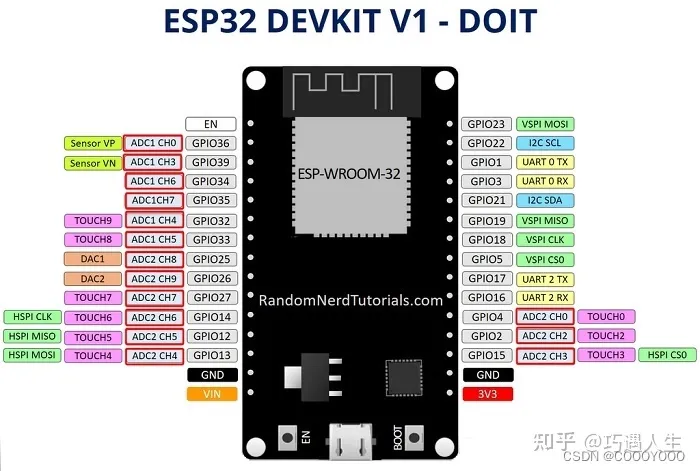 How to resolve the WiFi and ADC2 Sharing Dilemma?4/19/2024 24
How to resolve the WiFi and ADC2 Sharing Dilemma?4/19/2024 24ESP32-CAM can be used in various Internet of Things situations and is suitable for home smart devices, industrial wireless control, wireless Monitoring, QR wireless identification, wireless positioning system signals, and other IoT applications are ideal solutions for IoT applications.
Read More >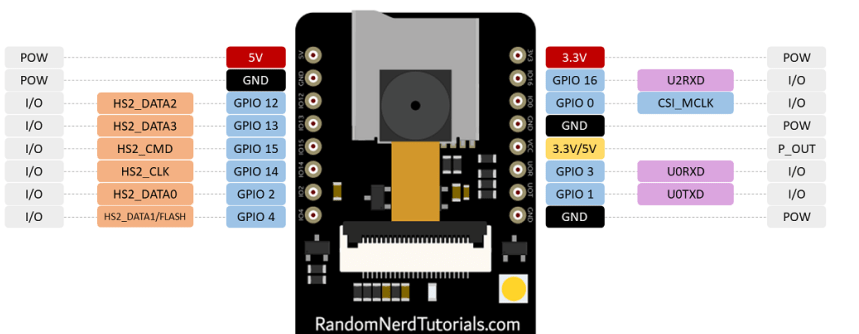 ESP32-CAM Pinout Explanation and How to Use?4/18/2024 55
ESP32-CAM Pinout Explanation and How to Use?4/18/2024 55ESP32-CAM is a development board with an ESP32-S chip, an OV2640 camera, a microSD card slot, and several GPIOs for connecting peripherals. ESP32-CAM is a small-sized camera module. The module can work independently as the smallest system, with a size of only 27*40.5*4.5mm.
Read More >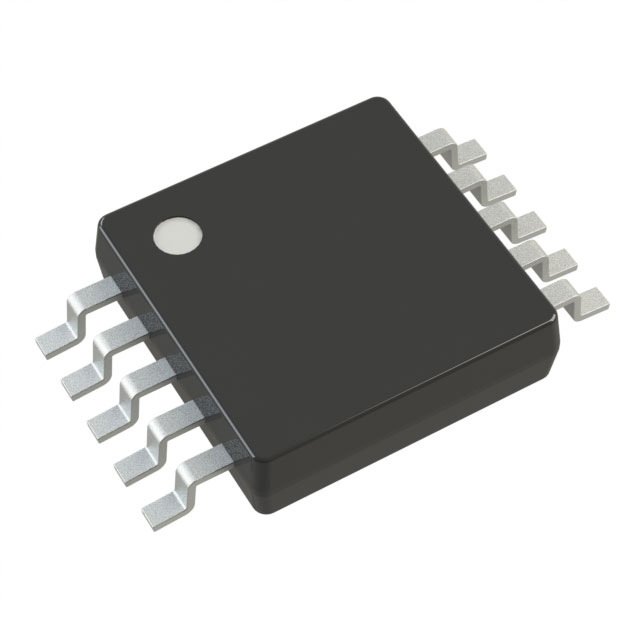 Stand-Alone Linear Li-Ion / Li-Polymer Charge Management Controller MCP738334/9/2024 61
Stand-Alone Linear Li-Ion / Li-Polymer Charge Management Controller MCP738334/9/2024 61The MCP73833/4 is a highly advanced linear charge management controller for use in space-limited, cost sensitive applications. Both a 10-lead, MSOP and a 10-lead, DFN packaging measuring 3 mm by 3 mm are offered for the MCP73833/4. In addition to its tiny size, the MCP73833/4 is perfect for portable applications because it requires a few additional components.
Read More >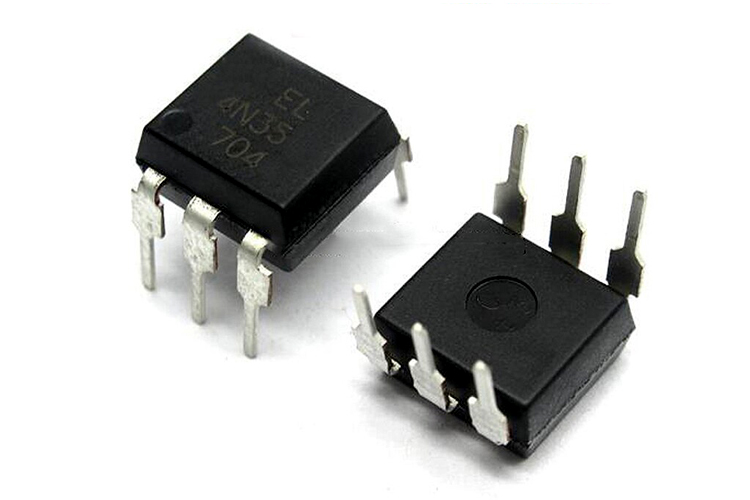 Optocoupler IC 4N35: Pinout, Datasheet, Features and Applications3/26/2024 101
Optocoupler IC 4N35: Pinout, Datasheet, Features and Applications3/26/2024 101In the realm of electronics, where connectivity and isolation are paramount, the 4N35 optocoupler IC stands as a beacon of reliability and versatility. This small yet mighty device plays a crucial role in ensuring signal integrity and safety across a wide range of applications. In this article, we delve into the intricacies of the 4N35 optocoupler IC, exploring its datasheet, pinout, circuit diagram, and diverse uses.
Read More >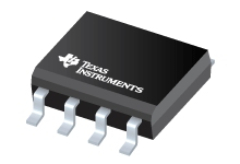 UA741CP datasheet ,Specification, Features and Application3/21/2024 101
UA741CP datasheet ,Specification, Features and Application3/21/2024 101The UA741CP is a general-purpose operational amplifier in an 8-pin DIP package. The high common-mode input voltage range and lack of latch-up make the amplifier ideal for voltage follower applications.
Read More >












